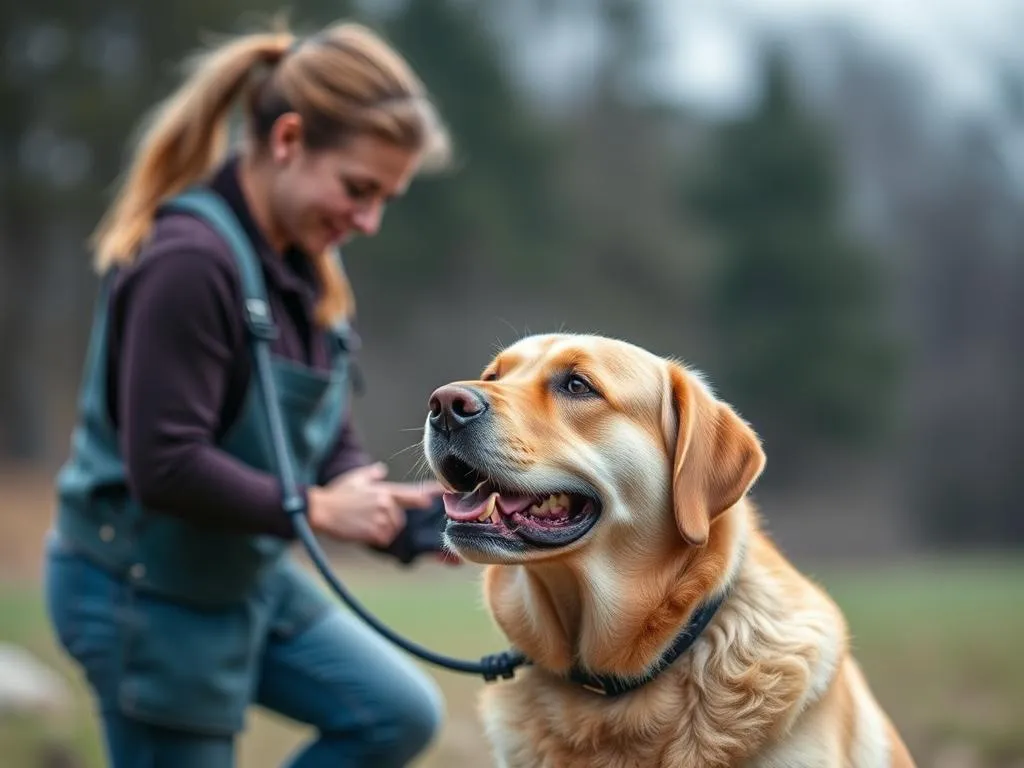
Effective dog training techniques are essential for fostering a healthy relationship between dogs and their owners. Training not only helps in managing a dog’s behavior but also enhances the bond shared with them. A well-trained dog is generally happier, more obedient, and less likely to exhibit behavioral problems, making life easier for both the pet and the owner. In this comprehensive guide, we will explore various dog training techniques that cater to different breeds and temperaments, ensuring a tailored approach for your furry friend.
Understanding Dog Behavior
The Nature of Dogs
To effectively train a dog, it’s crucial to understand their instinctual behaviors. Dogs are social animals that thrive on structure and routine. They communicate through body language and vocalizations, and their behavior is often a reflection of their environment and experiences. Recognizing these natural instincts helps owners set realistic training goals.
The social structure of dogs is another important aspect to consider. Dogs view their human families as their pack. They need a leader to provide guidance, which is why establishing authority through training is fundamental. Consistent commands and boundaries create a sense of security, allowing dogs to feel comfortable while learning.
Common Behavioral Issues
Understanding common behavioral problems is key to effective training. Issues such as excessive barking, destructive chewing, and aggressive behavior can stem from a lack of training or socialization. Addressing these problems early through appropriate training techniques is vital; otherwise, they may escalate and become more challenging to manage.
Basic Principles of Dog Training
The Importance of Consistency
One of the cornerstones of successful dog training techniques is consistency. Dogs thrive on routine. Using the same commands and signals consistently helps them understand what is expected. For instance, if you use the word “sit” to prompt your dog to sit, it’s essential to use that word every time. Inconsistent commands can confuse dogs and make training less effective.
Positive Reinforcement
Positive reinforcement is a powerful training technique that involves rewarding desired behaviors to encourage their repetition. This method is based on the principle that behaviors followed by rewards are likely to be repeated. Rewards can be treats, praise, or playtime. For example, if your dog sits on command and you give them a treat immediately after, they are more likely to sit again in the future.
Timing and Timing Techniques
Timing is crucial in dog training techniques. Providing immediate feedback—whether it’s a reward or correction—helps dogs connect their actions with the consequences. For example, if a dog jumps up on you, and you wait too long to correct them, they may not understand what they did wrong. Aim for immediate feedback to reinforce or redirect behavior effectively.
Popular Dog Training Techniques
Clicker Training
Clicker training is a popular method that utilizes a small handheld device that makes a clicking sound. This sound marks the exact moment a dog performs the desired behavior. This technique is beneficial because it provides clear communication. To implement clicker training, follow these steps:
- Familiarize the Dog with the Clicker: Click the device and immediately give a treat. Repeat this until the dog associates the sound with a reward.
- Introduce Commands: Once the dog understands the clicker, begin introducing commands. When the dog successfully follows a command, click and reward them.
- Gradually Increase Difficulty: As your dog becomes more proficient, increase the complexity of tasks while continuing to use the clicker.
Leash Training
Leash training is essential for the safety and control of your dog during walks. A well-trained dog will walk calmly on a leash, making outings more enjoyable. Here are some techniques for effective leash training:
- Start Indoors: Begin leash training in a quiet environment. Allow your dog to get used to the leash without distractions.
- Use a Short Leash: A shorter leash gives you more control and helps prevent your dog from wandering off.
- Reward Calm Behavior: Whenever your dog walks calmly next to you, reward them with treats and praise to reinforce this behavior.
Crate Training
Crate training serves multiple purposes, including providing a safe space for your dog and assisting with house training. Here’s how to introduce a crate:
- Choose the Right Crate: Select a crate that is large enough for your dog to stand, turn around, and lie down comfortably.
- Make It Comfortable: Add soft bedding and toys to make the crate inviting.
- Gradual Introduction: Start by allowing your dog to explore the crate with the door open. Gradually begin closing the door for short periods while rewarding them for staying calm.
Socialization Techniques
Socialization is crucial for a dog’s development and helps prevent behavioral issues. Here are some effective dog training techniques for socialization:
- Expose to Different Environments: Regularly take your dog to various places, such as parks, pet stores, and busy streets, to help them get accustomed to different sounds and sights.
- Meet New People and Dogs: Arrange playdates with other dogs and introduce your dog to new people in a controlled setting.
- Use Positive Reinforcement: Reward your dog with treats and praise when they display calm behavior around new experiences.
Advanced Dog Training Techniques
Obedience Training
Obedience training is a foundational aspect of dog training techniques, focused on teaching basic commands that enhance communication between you and your dog. Common commands include:
- Sit: A fundamental command that helps establish control.
- Stay: Teaches your dog to remain in place until given a release cue.
- Come: An essential command for ensuring your dog returns to you when called.
- Down: Encourages your dog to lie down, promoting a calm demeanor.
Agility Training
Agility training is a fun and engaging way to challenge your dog physically and mentally. This type of training involves navigating an obstacle course that can include jumps, tunnels, and weave poles. Benefits of agility training include improved coordination, increased confidence, and a stronger bond between you and your dog. To get started:
- Begin with Basic Obstacles: Use simple items like cones or small jumps to introduce your dog to the concept of agility.
- Practice Regularly: Regular practice sessions will help your dog become familiar with the equipment.
- Enroll in Classes: Consider joining an agility class to learn techniques and socialize with other dogs.
Behavioral Modification
Sometimes, dogs may exhibit unwanted behaviors that require modification. Techniques for behavioral modification include:
- Desensitization: Gradually exposing your dog to the source of their fear or anxiety in controlled settings can help them become less reactive over time.
- Counter-conditioning: This technique involves changing your dog’s emotional response to a stimulus by pairing it with something positive, such as treats or playtime.
Training Tools and Equipment
Essential Training Supplies
Having the right training supplies can significantly enhance your success with dog training techniques. Essential items include:
- Collars: Choose a comfortable collar that fits well. Consider using a flat collar or a harness for leash training.
- Leashes: A sturdy leash is crucial for control. Consider a standard leash for training and a longer one for practicing recall.
- Treats: Use small, high-value treats that your dog loves to keep their motivation high.
- Clickers: If using clicker training, invest in a quality clicker that is easy to operate.
Technology in Dog Training
Modern technology has introduced various tools that can enhance your training efforts. Some valuable tools include:
- Training Apps: Many apps provide training guides, videos, and tracking features to monitor your dog’s progress.
- GPS Collars: These collars allow you to track your dog’s location, providing peace of mind during outdoor adventures.
- Remote Trainers: These devices can help reinforce commands from a distance, but should be used judiciously to avoid confusion.
Common Challenges in Dog Training
Dealing with Distractions
Training in distracting environments can be challenging. To help your dog focus:
- Start in Low-Distraction Areas: Begin training in a quiet space before gradually introducing distractions.
- Use High-Value Rewards: Offer treats or toys that your dog finds irresistible to maintain their attention.
- Practice Focus Exercises: Teach your dog to look at you on command, reinforcing their focus during training sessions.
Overcoming Resistance
Resistance to training can stem from various factors, such as fear, anxiety, or lack of motivation. To address resistance:
- Identify Triggers: Observe your dog’s behavior to determine what may be causing resistance.
- Modify Training Techniques: Experiment with different training methods to find what resonates with your dog.
- Be Patient: Understand that every dog learns at their own pace. Patience and encouragement are key to overcoming resistance.
Maintaining Training Consistency
Consistency is vital for long-term training success. Here are some tips for maintaining training consistency:
- Set a Regular Schedule: Establish a consistent training routine, dedicating specific times each day for training sessions.
- Involve Family Members: Ensure everyone in your household uses the same commands and training methods to avoid confusion.
- Practice Regularly: Short, frequent training sessions are more effective than longer, infrequent ones.
Conclusion
In summary, effective dog training techniques encompass a variety of methods tailored to the unique behaviors and needs of each dog. From understanding dog behavior to implementing specific training methods, each step plays a crucial role in shaping a well-mannered pet. By being consistent, patient, and using positive reinforcement, dog owners can foster a loving and respectful relationship with their furry friends.
Remember, training is an ongoing process. The more time and effort you invest in your dog’s training, the more rewarding your shared experiences will be. Whether you choose to enroll in a training class or seek professional help, the key is to stay committed to your training journey.









